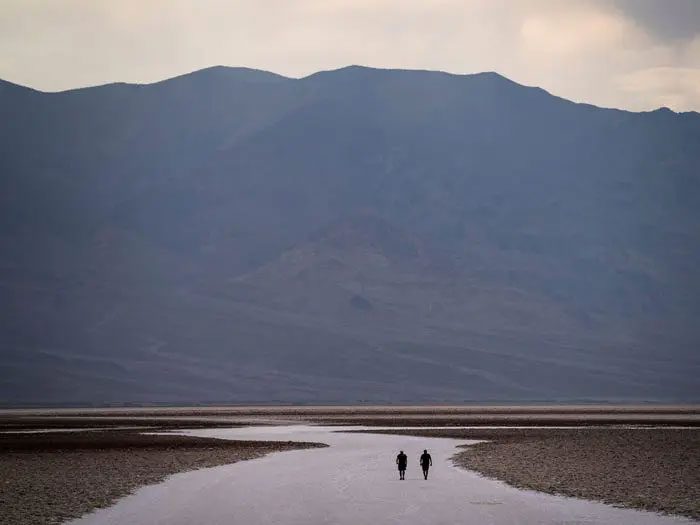Intense and persistent heatwaves have become the new normal, driving climate change and exacerbating droughts and wildfires across the planet.
June 2023 was the hottest month ever recorded, but July 2023 has proven to be even worse. The early days of July marked the hottest week recorded on Earth, according to preliminary data from the World Meteorological Organization (WMO).
The average global temperature reached a record high on July 3, 2023 and then broke that record for two consecutive days, according to Associated Press.

Warning signs in Death Valley.
The combination of factors, including summer weather, warmer atmospheres, and seasonal weather patterns like El Niño, has brought us to this point. However, experts warn that global temperatures could continue to rise.
Myles Allen, a professor of geological sciences at the University of Oxford, told The Washington Post that the hottest day “will happen when global warming, El Niño, and the annual cycle combine. That time is not far off.”
Excessive heat warnings and advisories currently apply to more than 100 million people in the United States, according to the National Weather Service (NWS).
The climate in the West is particularly harsh. Death Valley in California may exceed the hottest temperature ever recorded in history this weekend, amid what the National Weather Service has called “oppressive and dangerous heat.”

The surrounding mountains trap hot air in the long, narrow basin of Death Valley. (Photo: John Locher/AP).
The NWS urges the public to “practice heat safety measures,” such as staying hydrated and avoiding unnecessary outdoor activities.
According to this agency, temperatures in the famously arid Death Valley often reach 49 degrees Celsius. The heat could exceed 54.4 degrees Celsius this weekend – a record for the hottest temperature ever reliably measured on Earth, according to Scientific American.
Residents in Phoenix, Arizona, have also been treated for second-degree burns, as reported by the Independent. Temperatures in this city have soared above 43.3 degrees Celsius for two weeks.

Heat envelops the city of Phoenix, USA. (Photo: Kruck20/Getty Images).
Extreme Heat Everywhere
Currently, multiple heatwaves appearing simultaneously in different regions of the planet have become commonplace, causing droughts and wildfires globally.
Disastrous heatwaves have struck nearly everywhere in the world time and again in 2022, due to the climate crisis. Anthropogenic climate change is causing the average global temperature to rise.
Heat in the U.S. is not an anomaly. Heatwaves are scorching Europe, the Middle East, southeastern Turkey, and Morocco, prompting weather agencies in these countries to issue extreme heat warnings to their citizens.

A man cools off with water outside a “caseta” (a tent serving food and drinks) at the annual April Fair in Seville, Spain, on April 27, 2023. (Photo: Santi Donaire/AP)
Environmental scientists note that human emissions of carbon dioxide (CO2) and methane (CH4) have reached such levels that they have altered the Earth’s climate, contributing to increasingly frequent and prolonged extreme weather events in recent decades.
Years of consecutive droughts and above-average temperatures have nearly depleted the only freshwater reservoir in Uruguay. According to Guardia, more than half of the population of this South American country lacks access to safe tap water.
Climate stress is also hitting northern Argentina. Similarly, in Iraq, water shortages are having a cascading effect on the country’s agricultural and food production.
“Extreme weather – an increasingly frequent phenomenon under our warming climate – is having a significant impact on human health, ecosystems, the economy, agriculture, energy, and water supply.
This underscores the growing urgency of rapidly and profoundly reducing greenhouse gas emissions,” stated Petteri Taalas, Secretary-General of the World Meteorological Organization.


















































